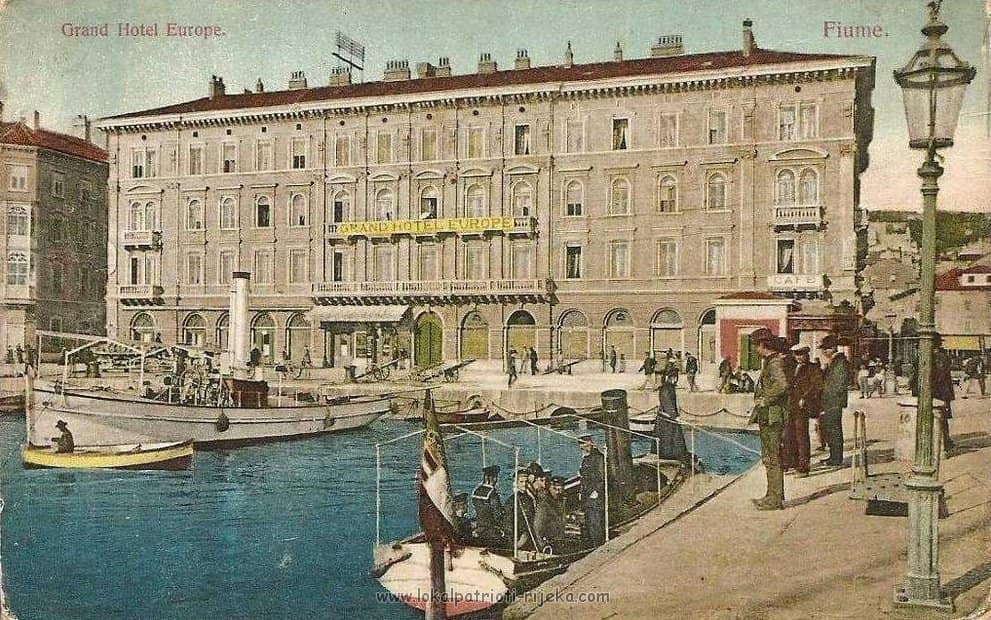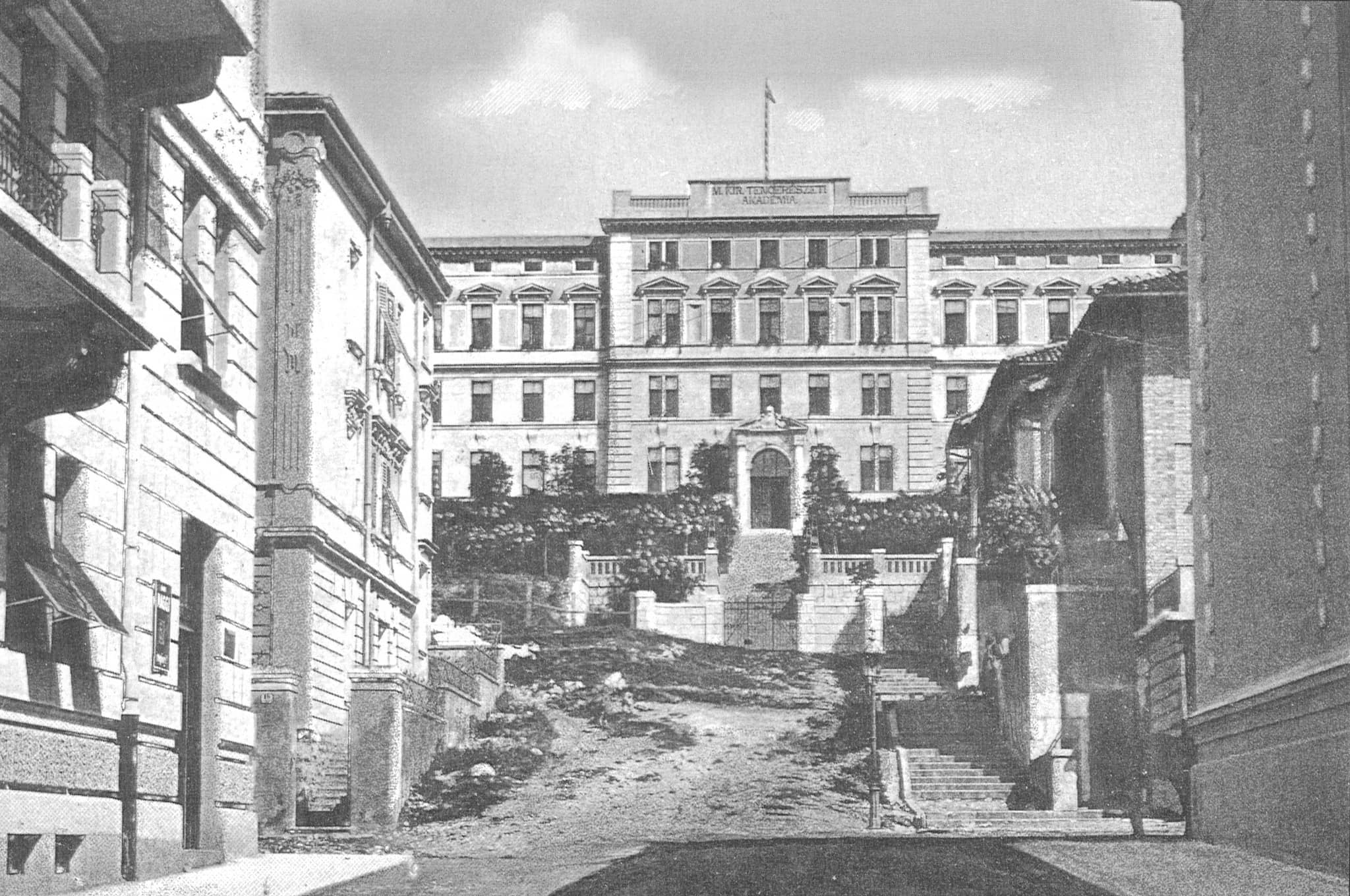Who got lost in a flash of history? - Fiume and the Hungarian coastline
The issue of Fiume or Rijeka in Croatian, and the Hungarian coastline is a long-standing debate between Hungarian and Croatian politicians and historians. It is worth reviewing the history of the town and its surrounding areas from a public law perspective, excluding the flood of interpretations, opinions, intentions and desires.
The city was purchased in 1466 by the family of the German-Roman Emperor Frederick III (1440/1452-1493), for the family of the Archduke of Austria (1457-1493), the Habsburgs, and was part of their empire until the dissolution of the Austro-Hungarian Empire. The city enjoyed extensive autonomy, and from the beginning of the 18th century it was administered by the Inner Austrian Governorate seated in Graz, and from 1747 by the Imperial-Royal Government of Austria.
In the following year, the Austrian Maritime Province of Commerce was set up under the authority of the Imperial and Royal Chief Intendant of Commerce. In 1754, the rather complicated subordination was somewhat simplified and the area was transferred directly under the jurisdiction of the Imperial Council of Trade, and named the Austrian Maritime Province.
Despite the various reorganisations, the principle remained the same: the territory was the property of the sovereign as Archduke of Austria.

A fundamental change in the history of Fiume is linked to Joseph II. The future Hatted King raised the idea with his mother, Maria Theresa, that it would be beneficial for Hungary's trade to have a coast and a seaport, and that Fiume should be subordinated to the Hungarian Royal Chancellery and the Hungarian Royal Council of Governors, which was then still seated in Pozsony. The Queen agreed to the proposal and on 9 August 1776, Fiume was incorporated into Croatia, with the proviso that a new county would be created and a governor would be in charge of the town. At the same time she also appointed the new governor, József Majláth.
The Croatian estates were reluctant to implement the order on the new duchy and also objected to the creation of the governorate, which led to a conflict with the monarch. The solution was a request from the Senate of Fiume requesting that "in the same way as all the other parts and provinces attached to the Kingdom of Hungary, this city shall be administered and possessed with its territory as attached to and incorporated into the Holy Crown of the Kingdom of Hungary".
Maria Theresa granted the request of the people of Fiume and issued a new decree on 23 April 1779, according to which "We permit, for the first time, that this commercial town, Fiume, with its district, may continue to be considered a separate body attached to the Holy Crown of Hungary, and be treated as such in all respects, and not be confused in any way with the other, the district of Buccari, which has belonged to the Kingdom of Croatia since ancient times."
According to the Queen's will, Fiume was removed from the Kingdom of Croatia and placed directly under the jurisdiction of the Hungarian Holy Crown. Subsequently, the affairs of the town were managed by the Empress through the Hungarian Royal Chancellery and the Hungarian governmental bodies.
In 1790, the enactment of the imperial decree was already on the agenda of the first parliamentary session convened after 1779. At that time, due to the resistance of the Croatian estates and the tactics of Leopold II, it was not passed, but the Hungarian estates kept the issue on the agenda. In 1792 and 1796, the war situation made the issue topical, but in 1802 the Hungarian estates raised the issue again, and the Emperor promised to settle the matter at the following Diet. This was standard procedure at the time.
It is interesting to note that the estates of Carniola also tried to "acquire" the city in 1795, but their request was rejected by Francis I.
Due to the French occupation of Vienna, the wartime Diet following the one in 1802 could not deal with anything other than military issues, but the Diet assembled in 1807 succeeded, with the powerful support of the Archduke Joseph of Austria, in passing the law on the incorporation of Fiume.
Article 4 of Law No. 1807 stipulated: "With the approval of His Holy Majesty, the town and port of Fiume, which has already been incorporated into the country by a special charter of Her Majesty Empress and Queen Maria Theresa, is declared by this article of law to belong to the country ... 1. § The Governor of Fiume shall have the right to sit and vote at the Diet's General Assembly, and the ambassadors of the town of Fiume at the Diet of the Arms and Orders." Thus, Fiume also became part of the Kingdom of Hungary under the codified Hungarian legal system.

The public status of the town was determined by this legislation until the Croatian-Hungarian reconciliation. After the 1867 Compromise, the relationship between Hungary and Croatia was settled by Article 30 of the Act of 1868, commonly known as the Croatian-Hungarian Compromise. The territories belonging to Croatia are listed in § 66:
"The following are recognised as belonging to the territory of Croatia, Slavonia and Dalmatia:
- All the territories which at present belong to the county of Fiume, together with the town and district of Buccari, with the exception of the town and district of Fiume, which town, port and district form a separate body (separatum sacrae regni coronae adnexum corpus) attached to the Hungarian Crown, and which - concerning its special autonomy city and its legislative and governmental relations - shall be settled by common agreement between the Diet of Hungary and the Diet of Croatia, Slavonia and Dalmatia and the city of Fiume by means of negotiations between delegations."
The wording of the article clearly states that the town and district of Fiume do not belong to Croatia, and singles it out from the areas recognised as belonging to Croatia. The article only ordered negotiation and agreement on the legislative and governmental relations of the town, so the resulting agreement did not change the public law situation, according to which Fiume remained part of Hungary.
The agreement concluded under the Croatian-Hungarian Compromise, commonly known as the “Fiume/Rijeka Provision ", was codified in the form of a royal decree on 28 July 1870. The decree established the Hungarian-Croatian Coastal Governorate, which was subordinated to the Hungarian Holy Crown and the Hungarian public administration.
This was supplemented by the 1872 statute of the city of Fiume, which clarified the provision. Therefore, the provision did not mean that Fiume did not remain part of the Kingdom of Hungary. This situation prevailed until the dissolution of the Austro-Hungarian Monarchy in 1918, when Fiume became part of the Kingdom of Serbs, Croats and Slovenes.

The Treaty of Trianon codified the annexation of Fiume. Title V of Act XXX of 1921 on the codification is entitled “Fiume ", article 53 of which states:
"Hungary renounces all rights and claims to Fiume and the surrounding territories which belonged to the former Kingdom of Hungary and which lie within the frontiers to be subsequently determined."
Fiume was therefore part of the Kingdom of Hungary even before the internationally ratified peace treaty, which leaves no doubt about the question.
Based on the above, it is a clear historical fact that a stretch of the Adriatic Sea was under Hungarian sovereignty and, given the autonomy of the city, under Hungarian governmental control between 1779 and 1918 (except for the French occupation between 1809 and 1813).
The Hungarian Prime Minister has repeatedly testified to his accurate knowledge of history. This time he was not wrong when he said that "we would have [sea] if it had not been taken away..."
With collegial friendship, we would also like to bring this article to the attention of the State Archives of Croatia.
Recommended literature available online:
Ezer év törvényei
https://net.jogtar.hu/ezer-ev-torvenyei
Soós István: Corpus separatum. Rubicon Online
https://rubicon.hu/cikkek/corpus-separatum
Ordasi Ágnes: Másodsorban – Kormányzói helyettesek és kormányzóhelyettesek Fiumében
https://ujkor.hu/.../masodsorban-kormanyzoi-helyettesek...
Polgár Tamás: Fiumei és magyar-horvát tengerparti királyi kormányzó iratainak repertóriuma
https://mnl.gov.hu/.../fiumei_es_magyar_horvat...
Juhász Imre: Fiume és a nemzetiségi egyenjogúság tárgyában hozott 1868. évi XLIV. törvénycikk. Erdélyi Jogélet, (2), 107-123.
https://doi.org/10.47745/ERJOG.2020.02.05
https://www.jogelet.ro/index.php/eje/article/view/34
1921. évi XXXIII. törvény az Északamerikai Egyesült Államokkal, a Brit Birodalommal, Franciaországgal, Olaszországgal és Japánnal, továbbá Belgiummal, Kínával, Kubával, Görögországgal, Nikaraguával, Panamával, Lengyelországgal, Portugáliával, Romániával, a Szerb-Horvát-Szlovén Állammal, Sziámmal és Cseh-Szlovákországgal 1920. évi június hó 4. napján a Trianonban kötött békeszerződés becikkelyezéséről [Act XXXIII of 1921 on the codification of the Treaty of Trianon of 4 June 1920 with the United States of North America, the British Empire, France, Italy and Japan, Belgium, China, Cuba, Greece, Nicaragua, Panama, Poland, Portugal, Romania, State of Slovenes, Croats and Serbs, Siam and Czechoslovakia]